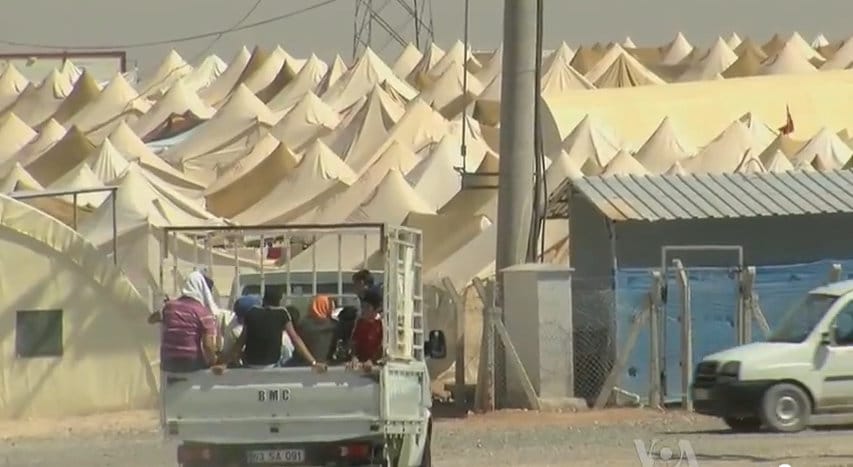Bleak winter for refugees in the Middle East

Mel Plant, BA Arabic and Turkish
Last winter saw the Middle East coated in an unprecedented amount of snow. Social media was flooded with images of snow-fights at the Dome of the Rock, with major cities like Cairo covered in snow for the first time in a hundred years. Many in the ramshackle refugee camps which are spread across the region died from the extreme cold, and this winter has been no different for the thousands of Syrian, Palestinian, Kurdish and Iraqi refugees living in flimsy tents, with little sufficient aid.
Three Syrians, including a six-year-old child, escaping through the southern mountains into Lebanon suffered death from exposure this January. Though the UNHCR has been delivering supplies such as thermal blankets and heaters to refugee camps since October, they admit that the aid is insufficient for the sheer amount of refugees. In Lebanon’s Bekaa Valley alone, there are over 400,000 registered refugees. 18 were reported dead in Bekaa in one week, with 11 killed by the storms in the rest of the country. It is not just those who have fled the war in Syria who are suffering under these harsh circumstances, with thousands of Palestinians still inhabiting refugee camps in the West Bank, Gaza, Syria and Jordan, and many Kurdish refugees, especially from Syria, residing in camps in Iraqi Kurdistan, Turkey and Syria. About 1.9 million Iraqis have been internally displaced, most fleeing to camps in Iraqi Kurdistan.
Fears over heavy loads of snow collapsing tents and hastily repaired buildings have spread through the region, especially with thousands in the Gaza Strip still living in destroyed buildings and UN schools, with little ability to reconstruct since Operation Protective Edge last summer. Three infants have died from the cold in Gaza since the beginning of the year. Camps across the region are in desperate need of kerosene heaters, in addition to money to purchase medicines and baby formula, with so many of the refugees being chronically ill, thus even more susceptible to the harsh conditions. Children are especially in danger, with a two-month-old Kurdish refugee having died in one of the border camps in Turkey. Some have resorted to the burning of nylon bags in heaters to provide warmth in the absence of fuel, which may prove lethal.
So many refugees in Lebanon live in unofficial camps which have received next to no aid, with many stating that the international organisations left with the start of the storm. Kurdish refugees in Turkey are facing a similarly lonely journey through the storm, with Turkish officials either unable or unwilling to accommodate the amount of refugees. This has left many Kurdish and thousands of Syrian refugees to spread across the country, often living a marginalised existence. Similar experiences have led to violence towards Syrian refugees who have been forced to live amongst the struggling, poor elements of Lebanese society. The storm, nicknamed Zina, is a hard riddle to crack when even official organisations, such as UNHCR, are unsure of the actual numbers of refugees. Hundreds of thousands of these refugees, as well as poor Lebanese children affected by the saturation of the country’s population, are without education, some for years.
Nisrine Jaafar, a SOAS lecturer in Arabic, has been involved in fundraising to aid Syrian and Palestinian refugees in Lebanon, working with a grassroots campaign called ‘A Bit of Warmth’. Run by refugees for refugees, “the aim of the campaign is to help [them] brave the adverse weather conditions which left them roofless, sick and vulnerable. The campaign is transparent and posts all the expenditures, all the information on money received and a full account of purchases on its Facebook page, minute by minute”, says Jaafar. The Facebook page is maintained in Arabic only, under the name ‘شوية دفا’. For more information, contact nj13@soas.ac.uk.



